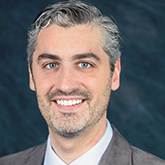HealthTrust solutions assist members with sustainability initiatives

The U.S. Department of Health and Human Services launched the Health Sector Climate Pledge in 2022. It is a voluntary commitment by private sector healthcare organizations to climate resilience and emissions reduction—specifically reducing greenhouse gas scope 1 and 2 emissions 50% by the year 2030 (using a baseline no earlier than 2008) and to achieve net-zero emissions by 2050. As of the end of 2024, nearly 150 organizations representing more than 950 hospitals had signed the Pledge.
“Working with HealthTrust members, we’ve found hospitals across the country are in varying places on their journey to reducing emissions,” says Lucy Madura, Director of Strategic Sourcing & Contracting on the Commercial Products team. “Some health systems have a sustainability program leader, while others look to their facilities team to manage their efforts,” she adds.

In response to member requests for assistance with sustainability initiatives, Nikko Giovino, AVP of Strategic Sourcing, Commercial Products says, “HealthTrust has contracted with two firms that can be engaged for a broad scope of services related to sustainability, energy efficiency, infrastructure planning and resiliency solutions.” The firms are Environ Energy (Contract #120800) and Mazzetti, Inc. (Contract #119500).
An extension of your team
The Source recently talked with Jennifer Kearney, President of Sustainability with Environ, and Christina Sanborn, Associate Principal and Sustainability Practice Leader with Mazzetti, to discuss their work with healthcare organizations of all sizes in helping them meet their reduction goals. Both indicate they work with members at any stage of their journey and have the staff to either “be” a provider’s team or to complement the efforts of an existing team.

Sanborn explains that her team of experts act as an extended member(s) of a hospital’s team. “We work with providers to identify their goals and remain connected to help them implement a customized plan—everything from facilitating change to align and motivate teams, designing a sustainability governance structure and annual reporting, to contracted sustainability staffing where we get in the trenches, lead teams and drive accountability.”
Kearney shares, “Often, a health system has signed the HHS pledge and has C-suite support, but it needs help developing a game plan. We assist with establishing their baseline so they know how much carbon they have to reduce to get to their goal and then turn that back into energy. Some organizations are actually further along than they realize, as there are many related projects sometimes already baked into their capital plan to optimize costs and improve efficiency. And the good news is: All of that counts toward their reduction goals.”
Responsible stewards

An area where Kearney and Sanborn believe everyone can agree is that universally, all healthcare organizations are interested in driving healthy benefits for their communities and being good stewards of available resources.
“Programs and pledges may come and go,” shares Kearney, “but this work will always be a net positive to those organizations who remain committed. Ultimately, we are reducing a hospital’s carbon footprint and operating costs, and saving money is always attractive to the healthcare sector. Improving efficiencies, focusing on the bottom line, and delivering great ROI is always the foundation of our practice.”
Optimization & reductions
HealthTrust Sustainability &
Energy AgreementsSustainability Consulting
Environ Energy – Contract #120800
Mazzetti – Contract #119500Sustainability Equipment
CED – Contract #6448
Thompson Machinery Corp – Contract #120238Sustainability/Carbon Reduction Software
Environ Energy – Contract #120800
Key Green Solutions – Contract #105835
Nzero – Contract #106753
SiteLogiq – Contract #106913Energy Asset Concession
Bernhard Energy Solutions – Contract #57570Utility Bill Pay Service
Conservice (an NISC company) – Contract #2570
“Any healthcare organization and their communities can benefit from load reduction, energy reduction and decreasing its dependence on fossil fuels,” Sanborn explains. “We suggest an energy audit and retro commissioning to optimize controls and identify ways to save money while reducing emissions. To help meet broader goals, we recommend aligning with a facility’s capital infrastructure plan to maximize their budget with deferred maintenance and carbon reduction plans. When taking into account the facility’s existing infrastructure plans, we recommend replacing equipment like chillers and boilers as they age with ones that are more efficient, such as heat pumps, leveraging their existing recapitalization plans. Concurrently, they are advancing their decarbonization goals.”
“Environ also looks at what is already underway at a facility,” shares Kearney. “We want to make sure the organization is getting credit for the great work they are already doing. We explore how to lower costs and increase profitability on investments. Our approach is practical; it’s about driving better efficiencies, modernizing equipment and smarter infrastructure renewals—all driving to a better bottom line.”
Kearney suggests that reviewing how a facility is heating and cooling and moving air are good places to start. “Air changes are mandated by code and infection control is a high-priority issue,” she says, “so we see what we can do with building automation and controls to move and condition air that’s not going to impact the patient experience—we concentrate on areas like administrative offices, common spaces and waiting areas versus patient rooms.”

When asked where to look for some quick wins, Bill Miller and Chris Hunt, subject matter experts on the Energy team at HealthTrust, recommend things like LED lighting replacements. Even these smaller projects can help move the needle. When looking to upgrade existing equipment, the HealthTrust team can point you toward suppliers with Energy Star-certified models, energy-efficient HVAC systems, flows and pumps, as well as smart appliances and equipment.
Funding is available
The Inflation Reduction Act of 2022 allows for new or expanded tax credits for energy-efficient facilities and incentives for solutions such as battery storage, solar panels or microgrids—all which can be utilized by hospitals for renewable energy and resilience initiatives.

“Hospitals are often surprised to learn about the amount of funding that is available to help defray these investments,” says Kearney. “We recommend taking advantage of all the state energy grants and loans that are out there. Programs are always changing. Unfortunately, utilities don’t do a good job of promoting what they offer; we can come in and provide turnkey service to help a healthcare organization get the money needed for a proposed project.”
Miller and Hunt take a similar approach. “In our conversations with utility companies, we are asking them to be more proactive about informing us and/or our members about opportunities like incentives and rebates. We can also work with a member in contacting its specific utility companies to discuss available incentives, rebates, funding and financing that is available for a member’s energy efficiency projects.”
Both Environ and Mazzetti are poised to assist HealthTrust members at any stage of their carbon reduction journey. While initial engagements typically begin with an energy audit, the firms can be engaged for the following customizable solutions:
- Strategic energy planning
- Greenhouse gas inventories
- Goal setting
- Data gathering and analysis
- Direct and indirect GHG emissions
- Regulatory reporting and certification
- RFP assistance for large carbon reduction projects and/or resiliency projects (e.g., PPAs, VPPAs, solar, wind, microgrids)
- Act as an owner’s rep throughout an entire project
- Contract negotiation support
- Terms and conditions
- Financial analysis
Energy Procurement & Utility Bill Pay Services
Over the last 25 years, HealthTrust has saved its members millions of dollars by leveraging data and strategically purchasing deregulated natural gas and electricity. Members in states where energy is available from suppliers other than utility companies can choose their own electricity or natural gas providers which allows them more options and typically better rates.
HealthTrust also offers a utility bill pay management service through Conservice (formerly Capturis) – Contract #2520, which provides facility managers and leadership better visibility into what is being spent each year on energy, as well as access to data analyses and benchmark reports. Hospitals can leverage this data to secure better pricing for energy and electricity.
Sanborn shares, “From the initial greenhouse gas inventory and data collection process, we can understand the current state of the organization’s portfolio. We then identify specific opportunities for efficiency, recommend technologies to electrify the remaining loads and advise the facility team on sourcing the clean electricity it needs to complete the decarbonization process. We build a roadmap that leverages their master plan and deferred maintenance plan, looking for opportunities to introduce new technologies or efficiency measures aligned with planned investments. That way, an organization is tackling decarbonization each time it invests in one of its facilities.”
An alternative approach
HealthTrust also offers Energy-as-a-Service (EaaS) solutions through a national agreement with Bernhard ProStar (BPS, Contract #57570).
In an EaaS model, healthcare providers partner with BPS for customized solutions to manage their complete energy infrastructure needs—everything from engineering design, construction, operations and maintenance, to financing that will reduce their carbon footprint and energy consumption, while providing unique financial and operational benefits.
By shifting capital needs to an operational expense, EaaS solutions provide clients with efficient and resilient infrastructure along with the long-term guaranteed benefits of budget certainty and risk transfer. BPS’ program can be tailored to guarantee results and allow the provider to focus their typically scarce resources on core healthcare operations.
BPS can also partner with the HealthTrust Energy team for a collaborative approach that addresses both the supply and demand aspects of utilities. In this scenario, BPS focuses on demand, while the HealthTrust Energy team handles the supply side and how a facility purchases its utilities, as well as how it hedges risk and manages the utilities.
READY TO REDUCE ENERGY & INCREASE EFFICIENCIES AT YOUR FACILITIES? Contact commercial@healthtrustpg.com to explore HealthTrust’s contracted providers for energy and sustainability-related initiatives.
Share Email Energy Savings, Environmentally Preferable Purchasing, ESG, Q2 2025




